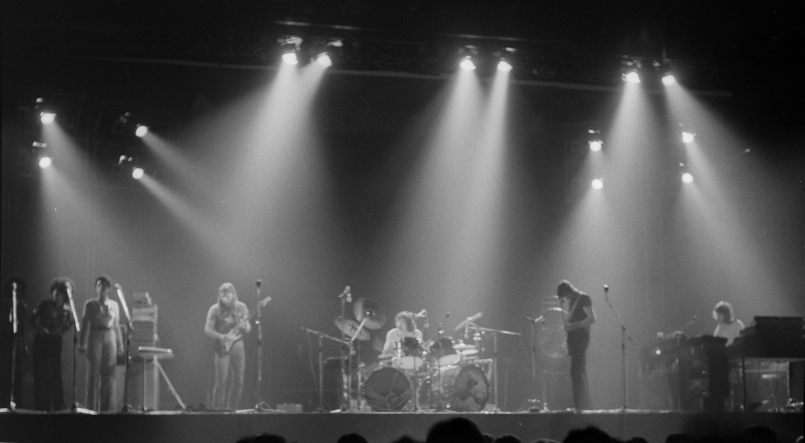Pink Floyd: Sonic Odyssey through Time
Introduction:
In the annals of rock history, few bands have left an indelible mark as profound and enduring as Pink Floyd. A collective of sonic visionaries, Pink Floyd’s journey from the experimental ethos of the 1960s to the timeless anthems of subsequent decades is a saga of artistic evolution, innovation, and global impact. In this exploration of Pink Floyd’s illustrious history, we uncover the threads that weave together the tapestry of their unparalleled musical odyssey.
I. Pink Floyd Genesis of a Sonic Revolution:
The story of Pink Floyd began in the mid-1960s amid the eclectic and vibrant music scene of London. Formed by Syd Barrett, Roger Waters, Richard Wright, and Nick Mason, the nascent Pink Floyd embarked on a journey that would redefine the boundaries of rock and roll. Their debut album, “The Piper at the Gates of Dawn” (1967), introduced the world to a psychedelic soundscape that hinted at the band’s penchant for sonic experimentation.

II. Syd Barrett’s Luminous Spark
At the heart of Pink Floyd’s early years was the enigmatic Syd Barrett, whose creative genius illuminated the band’s trajectory. Barrett’s whimsical songwriting and distinctive guitar work were pivotal in shaping the psychedelic identity of Pink Floyd. However, his increasing detachment from reality led to his departure in 1968, leaving behind a legacy of sonic innovation that would continue to influence the band’s future endeavors.
III. Waters, Gilmour, Wright, and Mason: The Core Quartet:
Following Barrett’s departure, Roger Waters assumed a more prominent role as the primary lyricist and conceptual architect. With David Gilmour joining the ranks, the quartet of Waters, Gilmour, Wright, and Mason crystallized as the nucleus of Pink Floyd. This lineup proved pivotal in shaping the band’s sonic identity, setting the stage for their groundbreaking albums of the 1970s.
IV. The Dark Side of the Moon: A Cosmic Masterpiece of Pink Floyd
The early 1970s witnessed Pink Floyd ascending to unparalleled heights with the release of “The Dark Side of the Moon” (1973). A concept album that explored the human condition, mortality, and the human experience, it not only catapulted Pink Floyd to international superstardom but also marked a watershed moment in the evolution of progressive rock. The album’s seamless fusion of music and thematic storytelling showcased the band’s mastery of the studio as an instrument itself.
V. Wish You Were Here and Animals: Continued Sonic Exploration:
Building on the success of “Dark Side,” Pink Floyd continued to push the boundaries of musical exploration with albums like “Wish You Were Here” (1975) and “Animals” (1977). The former, a poignant reflection on the absence of Syd Barrett, featured the iconic tribute to their former bandmate, while the latter delved into societal critique and the human condition, creating a sonic landscape that challenged the norms of conventional rock.
VI. The Wall: Constructing a Monumental Concept:
If “Dark Side of the Moon” was a cosmic exploration, “The Wall” (1979) was a magnum opus that blended rock opera with a deeply personal narrative. Spearheaded by Roger Waters, the concept album delved into themes of isolation, war, and the psychological barriers that individuals construct. With its elaborate stage productions and groundbreaking animation in the accompanying film, “The Wall” became an immersive sensory experience that remains an enduring masterpiece.
VII. Waters’ Departure and Gilmour’s Ascendancy:
As the 1980s unfolded, internal tensions reached a crescendo, resulting in Roger Waters’ departure from Pink Floyd. Undeterred, David Gilmour, along with Wright and Mason, carried the torch forward. The albums “A Momentary Lapse of Reason” (1987) and “The Division Bell” (1994) marked a new chapter in Pink Floyd’s history, showcasing Gilmour’s emotive guitar work and a continued commitment to sonic innovation.
VIII. Pink Floyd The Enduring Legacy:
Beyond their active years, Pink Floyd’s legacy endures. Their music, characterized by atmospheric soundscapes, thought-provoking lyrics, and Gilmour’s iconic guitar solos, has transcended generations. The band’s reunion at Live 8 in 2005, featuring Waters, Gilmour, Mason, and Wright, was a poignant reminder of their enduring impact and a rare moment that bridged the past and present.
IX. Conclusion: A Timeless Echo in the Musical Cosmos:
In tracing the history of Pink Floyd, we traverse a musical odyssey marked by innovation, experimentation, and a relentless pursuit of artistic excellence. From the psychedelic dawn to the concept album zenith, Pink Floyd’s journey mirrors the evolution of rock itself. As their music continues to resonate across the sands of time, Pink Floyd stands as an eternal testament to the transformative power of sonic exploration—a band that dared to push the boundaries and, in doing so, left an indelible mark on the very fabric of musical history.